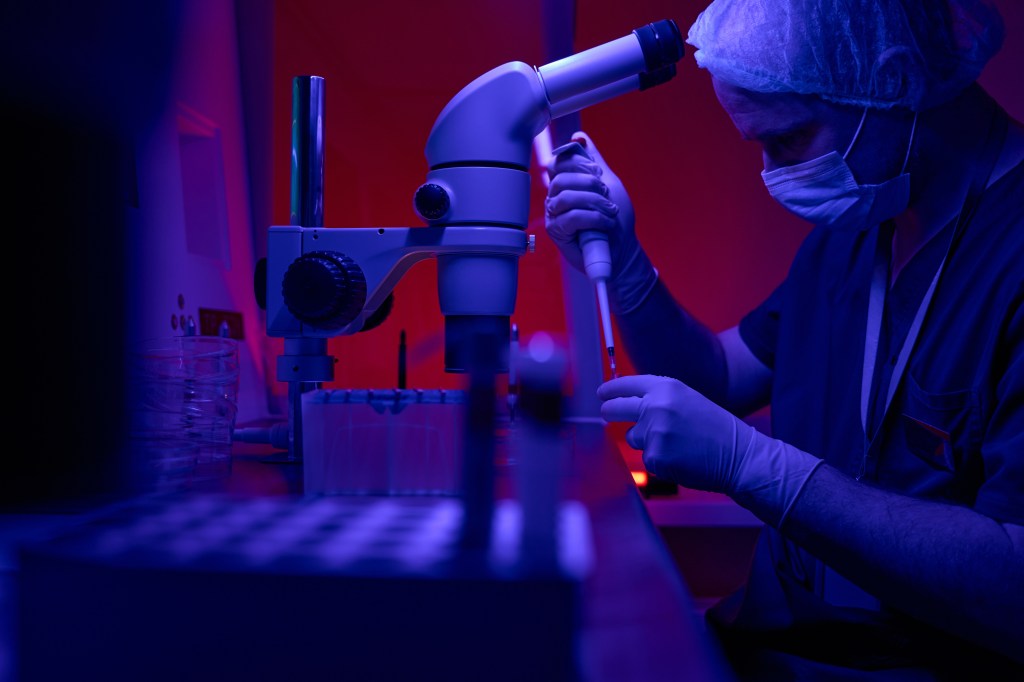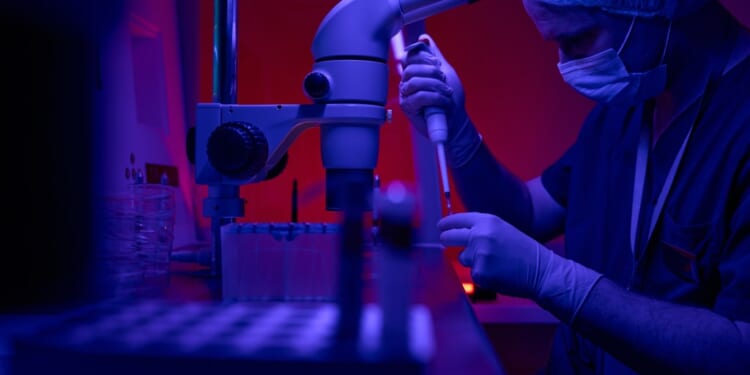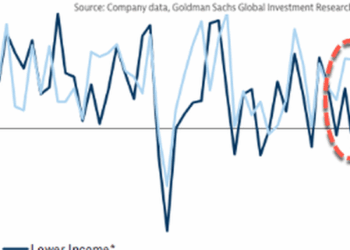
A thousand days. That’s how long the United States has to get serious about emerging biological threats spurred by advances in biotechnology and AI, or so argues Drew Endy, a Stanford University professor of bioengineering and one of the country’s leading experts in synthetic biology.
Endy co-authored a Hoover Institution report released earlier this month on what policymakers need to do to ensure the country’s future biosecurity as the “biorevolution” picks up speed in the coming years and decades. Researchers predict that a combination of breakthroughs in biosynthesis and AI computing is poised to make what sounds like the stuff of science fiction a reality—everything from using biomanufacturing to grow or “brew” explosives to creating computers that replace the constraints of processing hardware with exponentially more efficient bioprocessors known as “wetware.”
But the proliferation of these innovations will also drastically lower the barriers to entry for bad actors to manufacture and deploy harmful biological agents that could do anything from threaten food supplies to produce the next pandemic. Geopolitical adversaries, namely China, are close to and, in many areas, have already surpassed the U.S.’ long-standing leadership in biotechnology. The Chinese Communist Party has invested significantly in biotechnology for the last two decades and is on track to become the global hub of the biorevolution.
Biotech researchers see the next two to three years as a crucial, one-time window for the U.S. to catch up. Decisionmakers can work to preempt the biosecurity risks of the next technological revolution and set the U.S. on a path for strategic victory, they argue—or reap the consequences of failing to act.
One challenge of this new era is communicating just how transformative the coming decades could be. Congress established a National Security Commission on Emerging Biotechnology (NSCEB) in 2022 to partly address this challenge; one of the commission’s recommendations in a December 2023 commission report was working to improve “bioliteracy,” making the public and policymakers aware of the promise and peril of biotech innovations.
What exactly is this biorevolution? At a basic level, biotechnology is simply using biology to produce certain desired ends or products. The first wave of biotech, Endy explained, involved the millenia-old practice of animal and plant domestication and breeding. This era featured humans influencing biology through breeding animals or using fermentation to make alcohol, practices learned and refined over centuries.
The second wave came with the advent of recombinant or artificial DNA. About a half-century ago, scientists and researchers discovered it was possible to edit DNA and genes. This discovery has developed over the last five decades into early breakthroughs like synthetic insulin to more recent innovations like CRISPR technology, which has begun to produce incredible new medical treatments in recent years.
The third wave is currently emerging and centers on the advance and proliferation of synthetic biology. Where the first wave shaped biology through agricultural and domestication practices and the second further enabled the shaping of biology through direct editing at the genetic level, synthesis allows for the wholesale creation of new materials and products using biology. “We think of biology starting with how it is in nature, and that’s what biology is, and that’s what biology does,” Endy explained. “The editing wave, we’re changing the things that already exist, but the synthesis wave is a blank slate.”
Endy and a growing number of researchers in the field believe they can say with some confidence that biotechnology is currently where computing was in the early 1970s, on the precipice of transformation of the digital and internet age. Computers were large, expensive mainframes used by big businesses for relatively narrow tasks, but within a few short decades, computing became a general purpose technology used by everyone.
“Just as humans can program computers, we are on the cusp of being able to design and program biology to make all kinds of things that we use every day.”
Michelle Rozo
Biology could also become both a general purpose technology. Until now, biotechnology has been characterized by tinkering and experimenting to discover new applications, but it’s on pace to become a field where applications are instead designed and engineered. “Just as humans can program computers, we are on the cusp of being able to design and program biology to make all kinds of things that we use every day,” Michelle Rozo, a molecular biologist who serves as the vice chair of the NSCEB, told The Dispatch.
The third wave of biotech has already enabled the creation of raw materials and goods through entirely new processes. For example, a biotech company co-founded by Endy’s wife, Christina Smolke, is using synthetic biology to produce pharmaceutical ingredients. The company, Antheia, has successfully reengineered yeast that’s typically used to brew wine and beer and instead uses it to brew ingredients for essential medicines like naloxone, the opioid overdose treatment.
Antheia is already at the commercial stage in producing thebaine, a key ingredient in naloxone, that until recently has had to be harvested and extracted from poppies. Antheia instead uses biosynthesis and fermentation to grow the ingredient in a fermenter and produce the same amount of material in weeks that would conventionally take years. The company believes that half of all essential medicines can be made via biomanufacturing, offering the U.S. the potential to reshore pharmaceutical manufacturing, not through government subsidization, but through innovations that make domestic biomanufacturing cheaper than traditional overseas production.
But what researchers are also working on aren’t just new and improved ways to make things we’re familiar with, but entirely new products. “This ability to print DNA from scratch, to go from information in a computer describing ATCG to physically making a DNA molecule—this doesn’t happen in natural living systems, because the DNA always gets copied from another piece of DNA,” Endy explained. “If I could make any DNA I want, what can I do with that?” This includes things like bioluminescent petunias or engineering bacteria to live in sinuses that would cause mucus to change colors when someone is infected with a flu virus or coronavirus.
The potential applications of these advances are vast, and that’s why researchers believe this era could be so significant. The congressional biotech commission released its final report this spring and stacked the third biotech wave alongside the prehistoric agricultural revolution and the Industrial Revolution in historical significance. The consulting firm McKinsey & Company estimated in a comprehensive 2020 report that “as much as 60 percent of the physical inputs to the global economy could, in principle, be produced biologically.”
“[Synthetic biology’s] frontiers will continue to expand as the world’s knowledge of biology rises, the cost of DNA writing and editing falls, and synthesizing tools become even easier to use,” the Boston Consulting Group concluded in a 2022 analysis. “New products and processes will be created that sound like the stuff of science fiction but are ripe to go mainstream.”
A key barrier to the full development of third wave biotechnology is the complexity of biological systems. That complexity is a double-edged sword because it’s the reason why biomanufacturing and bioengineering offer so much promise over conventional processes; it’s also why scientists don’t fully understand those systems. But AI is quickly breaking down that barrier.
“Thanks to breakthroughs in artificial intelligence, engineering, and automation, researchers can now model extraordinarily complex biological systems without needing to fully understand how those systems work,” Sen. Todd Young of Indiana, chair of the NSCEB, wrote in an essay for Foreign Affairs last week. “Humans are now on the cusp of understanding and programming cells as easily as they program computers.” Young cited the 2021 example of researchers at Google’s AI lab, DeepMind, developing a model to accurately predict the shapes of proteins, a challenge that had previously stymied biologists for decades.
“When it arrives, it will impact every facet of our economy. Everything from medicine, to food, to agriculture, to industry and defense,” he added.
While the opportunities of the biorevolution are great, so are the risks. Researchers and policymakers working on biotech argue that biology’s emergence as a general purpose technology will inevitably lead to the proliferation of the ability to produce bioterror threats. Researchers at Stanford have already used bioengineering and AI to create a new working virus.
Both the costs and the expertise required to produce threatening biological agents are fast decreasing. “A conservative strategy would presume that by or before 2040 anyone sufficiently motivated to build viruses will have access to the knowledge and tools required,” the Hoover report concluded. But threats do not need to be as advanced or involved as a new virus to pose significant risks. The report also notes that AI could enable bad actors to simply tweak existing pathogens to “enhance lethality, help evade detection or diagnostics, or confer drug resistance.”
Endy and his co-authors outline concrete steps the U.S. government can take to mitigate these risks, including developing a biological intelligence and surveillance network to track and preempt biothreats before they become crises. They also emphasize that it’s essential for the U.S. to remain at the cutting edge of biotech innovation, enabling the nation’s scientific community to use biotech advances to make new threats irrelevant: “Biotechnology properly advanced will form our best biodefenses.”
Such a strategy will require some additional investment by the U.S. government in core areas, particularly in advancing the foundations of DNA synthesis research, which could help unlock additional private investment in new innovations. “America’s strong private markets remain its core advantage,” Young argued. “The U.S. government needs to empower those markets to do their job by addressing the obstacles biotechnology companies face in scaling up innovations: complex regulations, underutilized capital, and insufficient protections against dangers such as intellectual property theft.”
If China continues along its current trajectory of biotech development, the U.S. could fall behind on key innovations necessary for protecting against biothreats and developing biomanufacturing for critical resources and goods, like pharmaceuticals, that China already dominates. China has surged ahead in publishing the most-cited research papers in synthetic biology—with 60 percent of papers in 2023 being published by Chinese scientists compared to 7 percent by U.S. scientists—and is quickly becoming a global hub for biotech companies.
“China is not just fast-following but out-innovating us,” said Rozo, the NSCEB vice chair. “Major pharmaceutical companies are spending billions of dollars in China for license rights to new drugs at a scale that we’ve never seen before. All of that capital is going right back into China’s innovation ecosystem, rather than ours.”
“We are at real risk of being out-matched and of not being able to catch up,” she added.

















